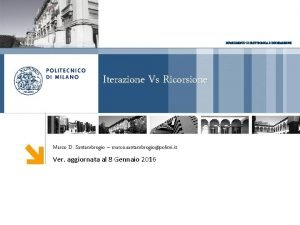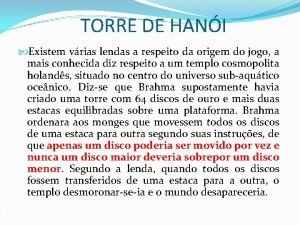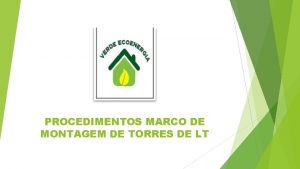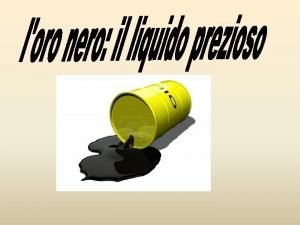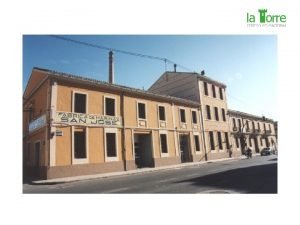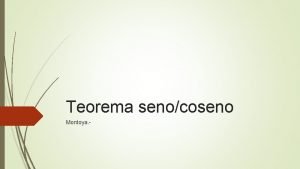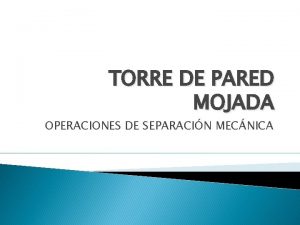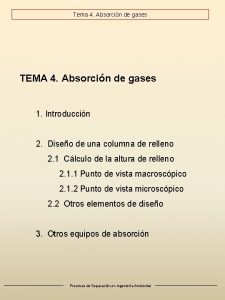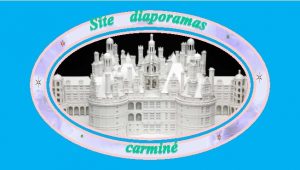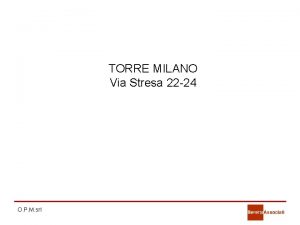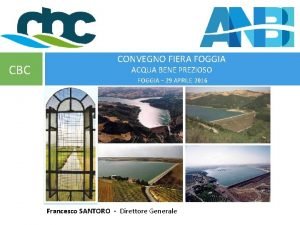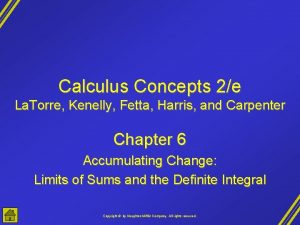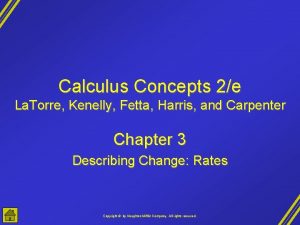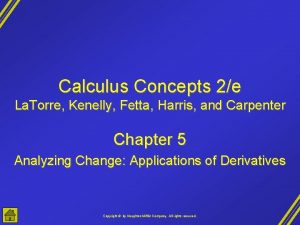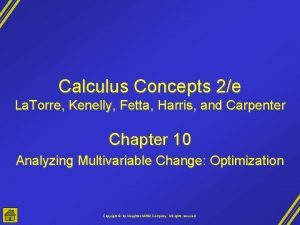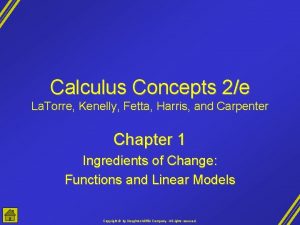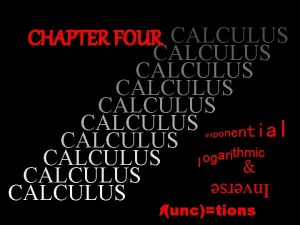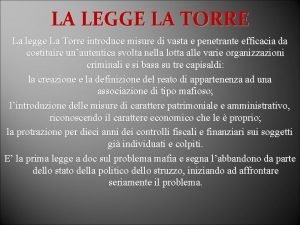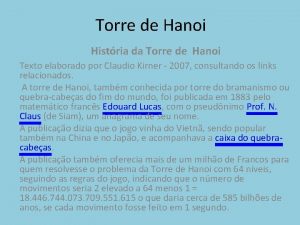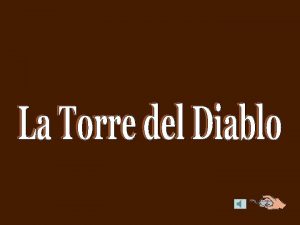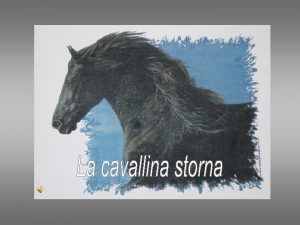Calculus Concepts 2e La Torre Kenelly Fetta Harris





























- Slides: 29

Calculus Concepts 2/e La. Torre, Kenelly, Fetta, Harris, and Carpenter Chapter 5 Analyzing Change: Applications of Derivatives Copyright © by Houghton Mifflin Company, All rights reserved.

Chapter # Key Concepts • • • Approximating Change Using Tangents Extrema Optimization Without Equations Inflection Points Related Rates Copyright © by Houghton Mifflin Company, All rights reserved.

Approximating Change Using Tangents • The change in the tangent line from x to x+h is (slope of tangent line at x) • h • The change in a function from x to x+h can be approximated by the change in the tangent line from x to x+h when h is a small number • That is, f(x+h) - f(x) f '(x) • h • The result of the change in input from x to x+h is f(x+h) f(x) + f '(x) • h Copyright © by Houghton Mifflin Company, All rights reserved.

Approximating Change Using Tangents Copyright © by Houghton Mifflin Company, All rights reserved.

Approximating Change Using Tangents • Marginal Cost: the rate of change of cost with respect to the number of units produced. That is, C'(x). • Marginal Revenue: the rate of change of revenue with respect to the number of units sold. That is, R'(x). • Marginal Profit: the rate of change of profit with respect to the number of units sold. That is, P'(x). Copyright © by Houghton Mifflin Company, All rights reserved.

Approximating Change: Example The temperature during and after a thunderstorm can be modeled by T(h) = 2. 37 h 4 - 5. 163 h 3 + 8. 69 h 2 -9. 87 h + 78 degrees Fahrenheit where h is the number of hours after the storm began. Use the rate of change of T(h) at h = 0. 25 to estimate how much the temperature changed between 15 and 20 minutes after the storm began. T'(. 25) = -6. 34 degrees per hour The temperature change is approximately (-6. 34 °F/hour)(0. 083 hours) = -0. 53 °F. That is , the temperature dropped by about half a degree. Copyright © by Houghton Mifflin Company, All rights reserved.

Approximating Change: Exercise 5. 1 #13 The population of Mexico between 1921 and 1990 can be modeled by P(t) = 12. 921 e 0. 026578 t million people where t is the number of years since 1921. Estimate how much the population changed between 1985 and 1986. t = 64 in 1985 and t = 65 in 1986 P'(64) = 1. 881698 million people per year P(65) - P(64) P'(64) • (65 - 64) = 1. 881698 (1) = 1. 881698 million people Copyright © by Houghton Mifflin Company, All rights reserved.

Approximating Change: Exercise 5. 1 #5 Interpret the following statements: a. At a production level of 500 units, marginal cost is $17 per unit b. When weekly sales are 150 units, marginal profit is $4. 75 per unit a. Increasing production from 500 to 501 units will cost about $17. b. Increasing sales from 150 to 151 units will increase profit by about $4. 75. Copyright © by Houghton Mifflin Company, All rights reserved.

Extrema • Relative maximum: the largest output value relative to nearby outputs • Relative minimum: the smallest output value relative to nearby outputs • Absolute maximum: the largest output value over the set of all inputs to the function • Absolute minimum: the smallest output value over the set of all inputs to the function Copyright © by Houghton Mifflin Company, All rights reserved.

Extrema • If a function has a relative maximum or relative minimum at an input value c, then f '(c) = 0 or f '(c) does not exist but f(c) does exist. • If f '(c) =0 and the derivative crosses the input axis at c, then a relative extremum exists at c. • An absolute extremum occurs at either a relative extremum or an endpoint of the specified interval. Copyright © by Houghton Mifflin Company, All rights reserved.

Extrema: Example The population of Kentucky reached a relative maximum in 1983 and a relative minimum in 1988. The population absolute minimum occurred in 1980 and absolute maximum occurred in 1993. Copyright © by Houghton Mifflin Company, All rights reserved.

Extrema: Example B(x) models the number of consumer complaints about baggage on U. S. airlines between 1989 and 1997. A relative and absolute minimum occurs in 1994. Copyright © by Houghton Mifflin Company, All rights reserved.

Extrema: Exercise 5. 2 #17 Sketch the graph of a function f that meets the following criteria: f has a relative minimum at x = 3 f has a relative maximum at x = -1 f '(x) > 0 for x < -1 and x > 3 f '(x) < 0 for -1 < x < 3 f '(-1) = 0 and f '(-1) = 0 Copyright © by Houghton Mifflin Company, All rights reserved.

Optimization Without Equations 1 Identify the quantity to be maximized (output) or minimized and the quantity on which the output depends (the input). 2 Sketch and label a picture, if applicable. 3 Build a model for the quantity to be optimized. 4 Rewrite the model equation in terms of only one input variable, if necessary. 5 Identify the input interval. 6 Apply optimization techniques to the equation. 7 Answer the question posed in the problem. Copyright © by Houghton Mifflin Company, All rights reserved.

Optimization: Example A rancher removed 200 feet of wire fencing from a field on his ranch. He wishes to reuse the fencing to create a rectangular corral into which he will build a 6 -foot wide wooden gate. What dimensions will result in a corral with the greatest possible area? Step 1: output variable: area of rectangular corral input variables: length and width of corral Copyright © by Houghton Mifflin Company, All rights reserved.

Optimization: Example Step 2: Step 3: A = lw where l is length, w is width, and A is area. This is the quantity we want to maximize. Copyright © by Houghton Mifflin Company, All rights reserved.

Optimization: Example Step 4: The equation is Step 3 has two variables so we need to find a second equation that relates the length and width. 2 w + 2 l - 6 = 200 l = 103 - w So A = lw = (103 - w)w = 103 w - w 2 square feet Step 5: If the corral length is 0 feet, the width is 100 feet. If the corral length is 100 feet, the width is 0 feet. So 0 < w < 100. Copyright © by Houghton Mifflin Company, All rights reserved.

Optimization: Example Step 6: A'(w) = 103 - 2 w Set A'(w) = 0 103 - 2 w = 0 2 w = 103 w = 51. 5 feet will maximize corral area Step 7: l = 103 - w l = 103 - 51. 5 = 51. 5 feet So the corral should be 51. 5 feet by 51. 5 feet in order to maximize area. Copyright © by Houghton Mifflin Company, All rights reserved.

Optimization: Exercise 5. 3 #3 A rectangular-shaped garden has one side along the side of a house. The other three sides are to be enclosed with 60 feet of fencing. What is the largest possible area of the garden? Step 1: output variable: area of garden input variables: length and width of garden Copyright © by Houghton Mifflin Company, All rights reserved.

Optimization: Exercise 5. 3 #3 Step 2: Step 3: A = lw where l is length, w is width, and A is area. This is the quantity we want to maximize. Copyright © by Houghton Mifflin Company, All rights reserved.

Optimization: Exercise 5. 3 #3 Step 4: The equation is Step 3 has two variables so we need to find a second equation that relates the length and width. 2 w + l = 60 - 2 w So A = lw = (60 - 2 w)w = 60 w - 2 w 2 square feet Step 5: If the garden length is 0 feet, the width is 30 feet. If the garden length is 60 feet, the width is 0 feet. So 0 < w < 30. Copyright © by Houghton Mifflin Company, All rights reserved.

Optimization: Exercise 5. 3 #3 Step 6: A'(w) = 60 - 4 w Set A'(w) = 0 60 - 4 w = 0 4 w = 60 w = 15 feet will maximize garden area Step 7: l = 60 - 2 w l = 60 - 2(15) = 30 feet The garden should be 15 feet by 30 feet in order to maximize area. The long side is against the house. Copyright © by Houghton Mifflin Company, All rights reserved.

Inflection Points • inflection point: a point where the graph changes concavity • If c is an inflection point of a function f then f ''(c) = 0 or f ''(c) is undefined • If the second derivative graph crosses the horizontal axis, then an inflection point of the function graph occurs at that input value. Copyright © by Houghton Mifflin Company, All rights reserved.

Inflection Points Copyright © by Houghton Mifflin Company, All rights reserved.

Inflection Points: Example The percentage of students graduating from high school in South Carolina from 1982 through 1990 who entered postsecondary institutions may be modeled by f(x) = -0. 1057 x 3 + 1. 355 x 2 - 3. 672 x + 50. 792 percent where x is the number of years since 1982. Find the inflection point of the function. f ''(x) = 0 at x = 4. 27 years since 1982 Copyright © by Houghton Mifflin Company, All rights reserved.

Inflection Points: Exercise 5. 4 #7 The graphs below present a function, its derivative, and its second derivative. Label the graphs and explain your reasoning. function; derivative; minimum at B x-intercept at B maximum at x = 0 inflection point at x = 0 minimum at x = A inflection point at x = A Copyright © by Houghton Mifflin Company, All rights reserved. second derivative; x-intercept at x =0 x-intercept at x =A

Related Rates 1 Identify independent and dependent variables 2 Find an equation relating the dependent variables. (Independent variable may or may not appear) 3 Differentiate both sides of the equation with respect to the independent variable 4 Substitute the known quantities and rates into the related-rates equation and solve for the unknown rate 5 Interpret the solution Copyright © by Houghton Mifflin Company, All rights reserved.

Related Rates: Example Find an equation relating the indicated rate for the given equation: Copyright © by Houghton Mifflin Company, All rights reserved.

Related Rates: Exercise 5. 5 # 9 Find an equation relating the indicated rate for the given equation: Copyright © by Houghton Mifflin Company, All rights reserved.
 Rosa mistica torre de david torre de marfil
Rosa mistica torre de david torre de marfil Harris & harris digital design and computer architecture
Harris & harris digital design and computer architecture Torre di hanoi
Torre di hanoi Ins torre de malla
Ins torre de malla Lenda da torre de hanoi
Lenda da torre de hanoi Montagem de torre com facão
Montagem de torre com facão Layunin ng lipunan kabutihang panlahat
Layunin ng lipunan kabutihang panlahat Liquido denso
Liquido denso Voyage scolaire italie
Voyage scolaire italie Torre
Torre Marzo incompleto
Marzo incompleto Torre do tombo online
Torre do tombo online En el gráfico hallar la distancia entre los árboles
En el gráfico hallar la distancia entre los árboles Pared mojada
Pared mojada Indirizzo musicale
Indirizzo musicale Columnas de absorción
Columnas de absorción Croisiere archipel maddalena
Croisiere archipel maddalena Ins torre de malla gestin
Ins torre de malla gestin Torre di cerrano spiaggia
Torre di cerrano spiaggia Zubeltzu torre
Zubeltzu torre Via stresa milano
Via stresa milano Torre piezometrica foggia
Torre piezometrica foggia Habacuque 2 15
Habacuque 2 15 Torre eiffel montagem
Torre eiffel montagem Torre regatta living
Torre regatta living Che guevara aleida march de la torre
Che guevara aleida march de la torre Biografia eduardo mendoza
Biografia eduardo mendoza Celestial nocchiero
Celestial nocchiero Josefina de la torre biografia
Josefina de la torre biografia Pablo de la torre serrano
Pablo de la torre serrano


